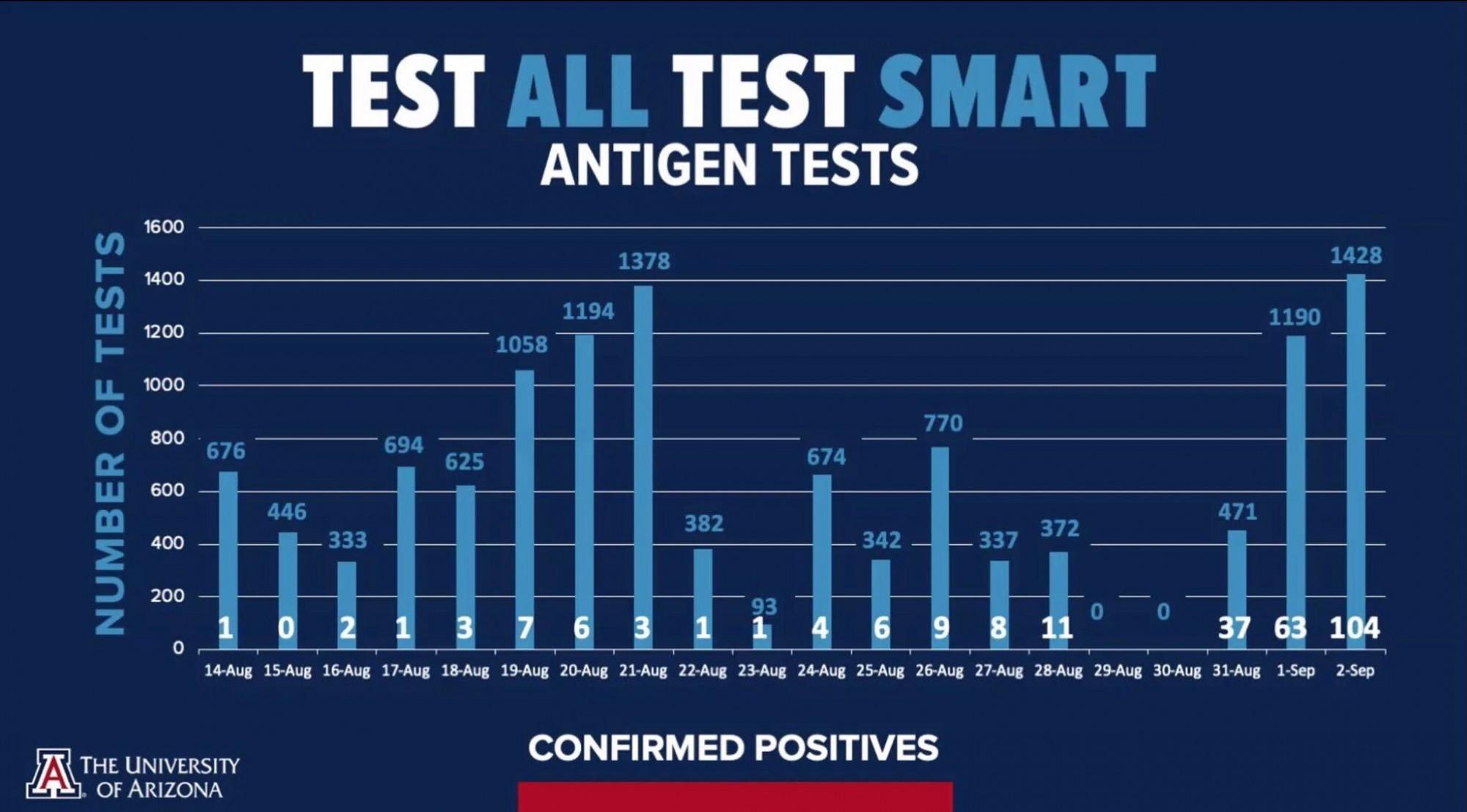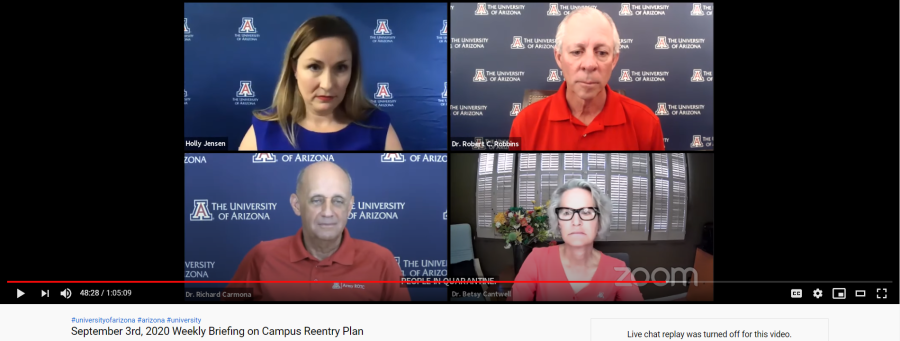The University of Arizona campus reentry task force met Sept. 3 for their weekly press conference. They discussed the increase in positive cases, compliance enforcement and current resource usage trends.
President Dr. Robert C. Robbins announced that the university will remain in phase one of the reentry plan next week with in-person components being facilitated for courses only when essential. However, these courses have been using virtual means when it isn’t necessary to be in-person and to prepare for any in-person components.
RELATED: Three-day spike accounts for 75% of University of Arizona positive coronavirus tests
When the Daily Wildcat asked how many students are currently enrolled in courses with some in-person component during phase one, Robbins said that the number of students is currently less than 5,000 for face-to-face classes. He also emphasized that whatever these classes can do virtually will be done virtually, minimizing the amount of time spent in-person.
While the vast majority of students have been complying with COVID-19 mitigation measures, Robbins noted that he was upset to see some concerning instances of noncompliance.
“A small number who do not follow the guidelines can spoil this for everyone,” Robbins said. “I’m asking everyone, please follow the rules. You may not get sick, but you can spread this disease.”
Yesterday, Sept. 2, 104 positive antigen tests were discovered out of over 1,400 individuals tested.

Though the UA has seen a significant increase in positive tests in the last 48 hours, Robbins credits this phenomenon to the increase in testing. The university ramped up testing to 5,000 tests a week, in addition to any students who wish to be tested.
Robbins also touched on concerns about mask and social-distance compliance enforcement, explaining that the external monitors are professionals with a working record on campus, previously seen at football and basketball games. They are not law enforcement and they are not armed.
“They’re authorized to intervene, just to remind,” Robbins said.
Reentry Task Force Director Dr. Richard Carmona reiterated his concern from last week about snowbirds (people who move to Arizona during the cold-weather seasons), who are more susceptible to disease because of their old age and as a result, will decrease available ICU beds. However, the UA’s own isolation beds are only at 5.76% capacity, with 417 maximum available beds.
Carmona also mentioned that ventilator-use continues to drop and, like Robbins, credits the increase in positive cases to targeted testing.
Follow Kristijan Barnjak on Twitter









